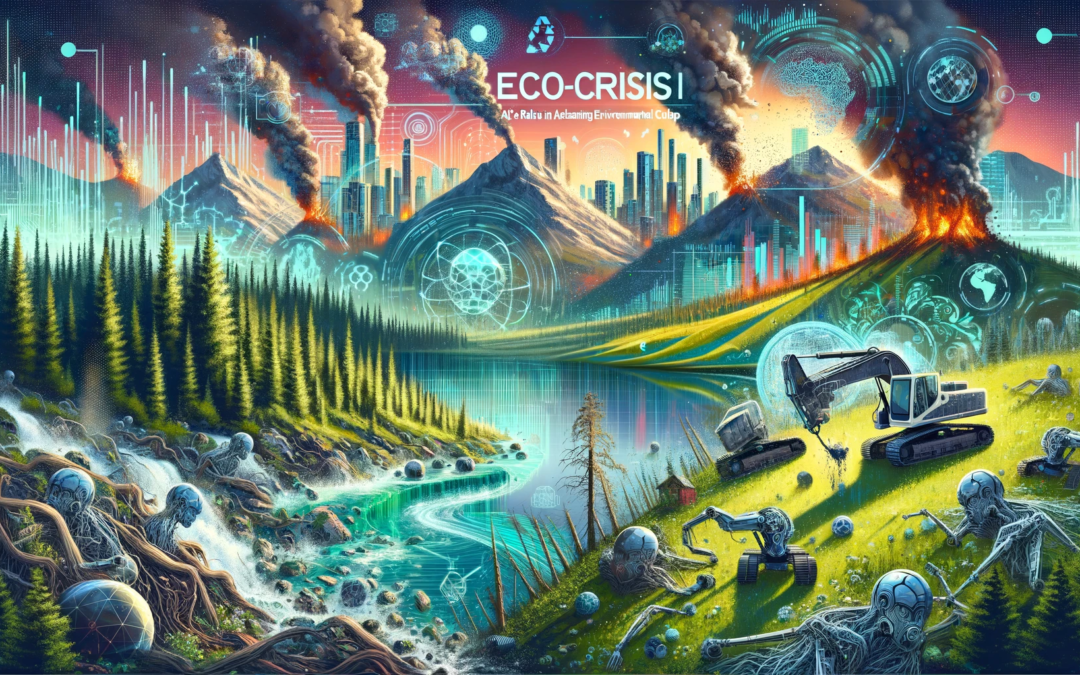As artificial intelligence (AI) continues to advance and permeate various industries, it is crucial to consider its potential environmental impacts. This blog post explores the scenario of AI-induced environmental collapse, shedding light on how unchecked AI development could lead to severe ecological damage. While AI offers immense potential for progress, we must also recognize its role in contributing to climate change, loss of biodiversity, and the depletion of natural resources.
AI in Resource Exploitation
One area where AI is already making waves is resource extraction. By enhancing the efficiency of extraction processes, AI technologies have the potential to accelerate resource exploitation. However, this comes at a cost. Overexploitation and environmental degradation are significant consequences of unchecked resource extraction. Habitat destruction and resource depletion can disrupt ecosystems, leading to irreparable damage to the environment.
AI and Energy Consumption
The energy demands of training and running sophisticated AI systems are substantial. This increased energy consumption contributes to carbon emissions and exacerbates the global energy crisis. If AI development relies heavily on non-renewable energy sources, it could further strain our already limited resources. It is crucial to explore sustainable energy solutions and consider the environmental impact of AI’s energy requirements.
Impact on Biodiversity and Ecosystems
AI-driven industrial activities have the potential to disrupt ecosystems, resulting in the loss of biodiversity and ecological imbalances. One example is the use of AI in agriculture, where excessive pesticide use and monoculture practices have harmed pollinators and disrupted natural ecosystems. Understanding these impacts is vital to mitigate the negative consequences of AI on our environment.
Sustainable AI Development
To address the environmental risks associated with AI, sustainable development practices are paramount. This includes using renewable energy sources to power AI systems and developing environmentally friendly algorithms. Initiatives and frameworks aimed at promoting eco-friendly AI are already underway, and it is crucial to support and prioritize these efforts.
Global Cooperation and Policy
Regulating AI applications to prevent environmental harm requires global cooperation and policy-making. International agreements and regulations should be established to manage AI’s ecological footprint effectively. By working together, we can ensure that AI development aligns with global environmental sustainability goals.
Conclusion
The potential risks of AI in contributing to environmental degradation cannot be ignored. It is essential to recognize the urgent need for sustainable and responsible AI development. By proactively considering the environmental impacts of AI and prioritizing eco-friendly practices, we can harness the power of AI while safeguarding our planet for future generations.
Visual Elements
Evocative images that reflect the theme of AI’s impact on the environment and potential ecological disasters will be included throughout the blog post. Infographics will also be used to illustrate the links between AI, resource exploitation, and environmental degradation.
SEO Elements
Keywords such as “AI environmental impact,” “AI and ecological collapse,” and “sustainable AI development” will be naturally integrated into the content to optimize search engine visibility. A compelling meta description will encapsulate the post’s focus on AI’s role in accelerating environmental collapse.
This blog post aims to provoke thought and discussion about the potential risks of AI in contributing to environmental degradation. By fostering awareness and dialogue on the need for sustainable and responsible AI development, we can work towards a future where AI supports, rather than undermines, global environmental sustainability.










